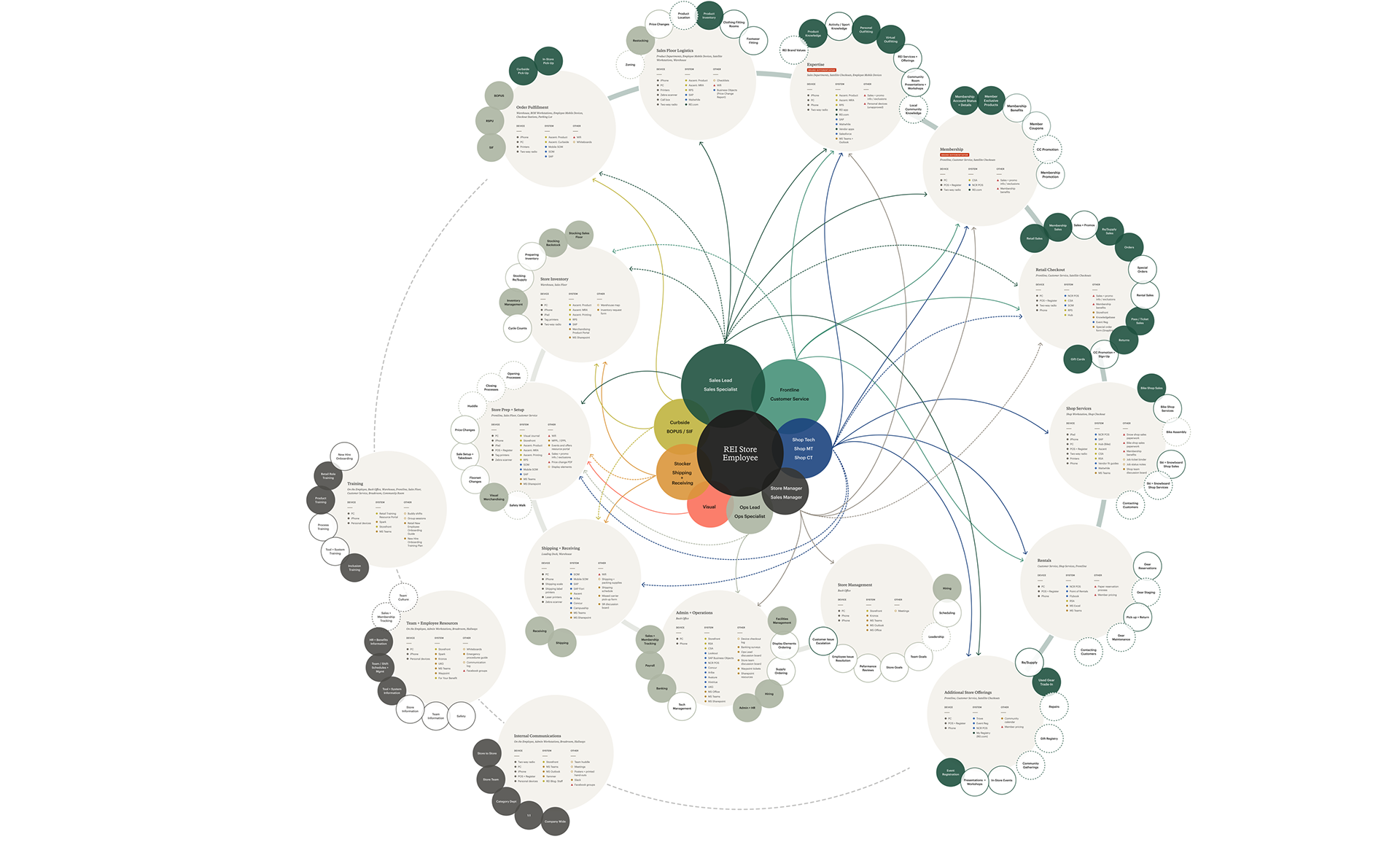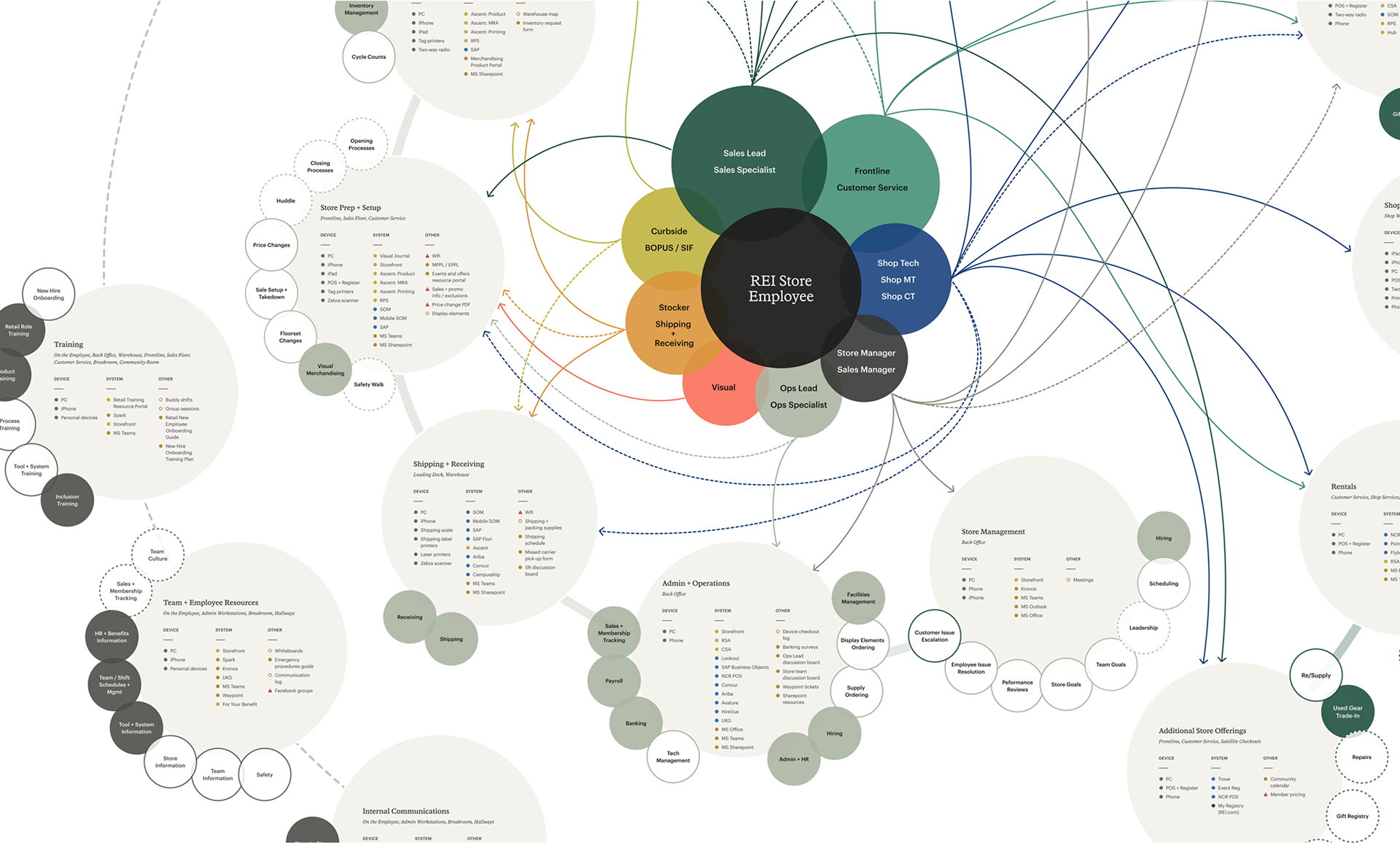The Background
The pandemic has accelerated retail's digital transformation. Adapting online options poses challenges for REI employees who must navigate multiple systems to complete tasks.
Over the past year, 40% of Americans have experimented with alternative shopping methods, with nearly 75% of those who used curbside pickup, Buy Online Pickup In-Store (BOPIS), or home delivery expressing a strong preference to continue these services post-pandemic. This shift has redefined consumer expectations, creating long-term challenges for retailers that initially viewed omnichannel retailing as a temporary adjustment rather than a permanent transformation.
As a leading outdoor retailer, REI must adapt to a consumer marketplace that has been permanently reshaped by digital convenience. With 162 store locations nationwide and a 13,000-person retail workforce, REI recognizes that to remain competitive, it must enhance its omnichannel experience while also supporting its frontline employees with better digital tools.
To address these challenges, we conducted a comprehensive evaluation of REI’s digital tooling ecosystem, focusing on:
· Enhancing operational efficiency and usability for in-store teams managing omnichannel fulfillment.
· Optimizing digital workflows to reduce friction between e-commerce, inventory management, and in-store pickup.
· Improving employee experience, ensuring that digital solutions empower rather than hinder retail staff in delivering seamless customer service.
· Optimizing digital workflows to reduce friction between e-commerce, inventory management, and in-store pickup.
· Improving employee experience, ensuring that digital solutions empower rather than hinder retail staff in delivering seamless customer service.
THE OBJECTIVE
Retail employees are expected to provide a superior brand and customer experience while utilizing various job-critical technology solutions. However, these solutions are often not integrated with each other, which creates unnecessary challenges and frustration for employees. From restocking the floor to assisting customers with their needs, these disconnects can cause distrust and dissatisfaction with the technology.
THE CHALLENGE
COVID-19 has sped up retail digitization & BOPIS adoption. BOPIS provides online benefits with in-store engagement. However, REI employees often navigate 2+ systems to complete tasks. Although this is one example, it signals the disparate state of internal systems and the cognitive havoc they wreak on employees, inflating operational costs.
Conducting user research
The first phase of this initiative focused on in-depth research to assess the digital tooling challenges impacting REI’s 13,000-person retail workforce across 162 store locations. Using a mix of qualitative and quantitative methods, we identified pain points, measured employee sentiment, and gathered actionable insights to drive meaningful improvements.
Employee Engagement & Digital Tool Usability Assessment:
· Conducted Glint employee engagement and Ascent quarterly experience surveys, comparing responses before and after optimization efforts.
· Measured percentage increase in positive responses to questions related to digital tool usability and effectiveness, providing a benchmark for improvements.
· Assessed the correlation between employee satisfaction with digital tools and overall job satisfaction and retention rates, ensuring a direct link to workforce stability.
Retail Operations Working Sessions & Stakeholder Feedback:
· Facilitated cross-functional working sessions with Retail Operations, store managers, and frontline employees, gathering actionable insights to guide digital tool enhancements.
· Captured post-session feedback ratings, assessing perceived effectiveness and ensuring that the insights gathered translated into tangible improvements.
Store Visits & Regional Insights:
· Conducted on-site observations and employee interviews across X stores, ensuring insights accounted for variations in store size, regional demands, and operational differences.
· Accompanied executive leadership on regional store visits, providing first-hand demonstrations of usability challenges and advocating for solutions directly with decision-makers.
· Identified common themes and pain points across different store environments, ensuring that optimizations addressed scalable, system-wide issues rather than isolated concerns.
VISUALIZING FEEDBACK
To better understand the retail environment and identify the right problem areas to address, we needed to get a better sense of the big picture. We needed a way to visually articulate the complexity and its role in the customer experience.


MAPPING THE ECOSYSTEM
What is represented?
• Employee role sub-groups
• Responsibility category groups
• Related/relevant tasks for each category group
• Connections between roles and responsibilities
• A high-level audit of the supporting technologies/tools used and categorized by type
OUTCOMES & IMPACT
“This new system has completely changed how we handle online orders. Before, it took so long to navigate between tools, but now I can get customers what they need in half the time.” – REI Store Associate
Task Efficiency Improvement
• The average time required to process a BOPIS (Buy Online, Pick Up In-Store) order decreased from 10 minutes to 6 minutes, a 40% improvement in employee productivity.
• Employee lookup for inventory availability was streamlined, reducing time spent navigating multiple systems from 4 minutes to 1.5 minutes per inquiry.
Employee Adoption & Satisfaction
• Post-launch surveys showed a 92% satisfaction rate among store employees using the updated system, compared to 58% before implementation.
• Training time for new hires was reduced by 45%, from an average of 5 hours to 2.75 hours, accelerating onboarding and decreasing training costs.


